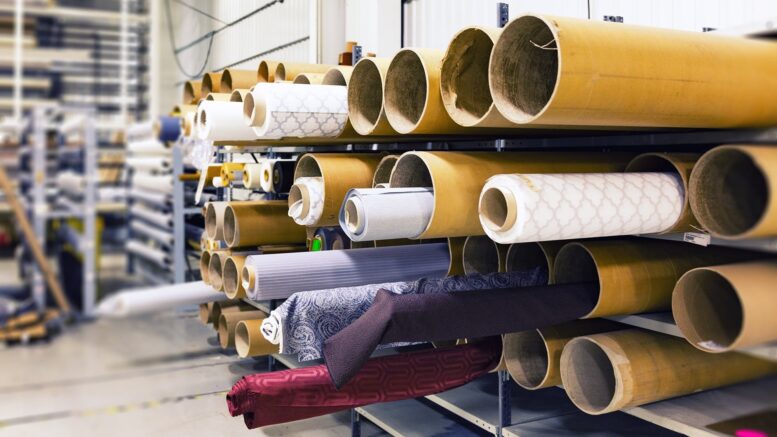Using the words ‘fabric’ and ‘textile’ interchangeably to describe different materials is a common mistake among regular folks.
As a professional designer or engineer, however, you can’t afford such mistakes, especially with money and reputation at stake.
Understanding the differences between the two terms ensures precise material selection and an efficient manufacturing process.
Today’s guide will clear up the fabric vs. textile confusion. It will explain the meaning behind both terms and how you can differentiate between them.
Let’s jump right into it!
Are Fabric and Textile the Same Thing?
No, fabric and textile aren’t the same thing. Each term describes a different aspect of a material. From the meaning of each word to their composition and applications, fabric and textile differ in several aspects.
What Does Fabric Mean?
Fabric is a term used to describe finished material products in the form of a film-like, flat mass. It’s made via winding, intersecting, and joining techniques.
You can say woven fabric when referring to products made out of materials that are developed by weaving, knitting, and crocheting. The majority of fabrics are woven.
Alternatively, you can use the term nonwoven fabric to talk about products made using materials that have been felted, braided, or twisted.
What Does Textile Mean?
Textile refers to any material made out of textile fiber. These fibers are interlaced by knitting or weaving to produce various types of textiles.
Examples of textile fibers include thread, rayon, natural silk, elastic silk, short-hair silk, metal wire, and chemical fiber.
We can classify textile fibers based on three main aspects as follows:
- Composition: Includes several subtypes divided according to the fibers’ material, structure, appearance, texture, processing method, and primary use.
- Application: Divided into industrial textiles, ornamental textiles, and clothing textiles based on the utility of the textile.
- Manufacturing: Divided into textile cloth, belt, line, woven fabric, and chenille among other categories depending on the production manner of the textile fibers.
Differences between a Fabric and Textile
Now that you have a better idea of the definitions of fabric and textile, we’re going to compare them more closely to help you make the distinction.
Word Origin
The term fabric has its roots in the Latin word (fabrica), which translates into skillful trade, art, or workshop.
On the other hand, the term textile originates from the Latin word (taxere), which directly translates into (woven cloth).
Made From
A fabric can be made out of a woven material (also known as yarn) by weaving, knitting, crocheting, sewing, or stitching. It can also be made from a nonwoven material (referred to as fiber).
A textile is made from textile fiber, yarn, or fabric (or their combinations) by weaving or knitting. These fibers can be man-made or natural.
Refers To
When we say fabric, we’re typically referring to finished materials meant for a specific use. In other words, fabric is used to talk about materials that have been through extra processing steps.
Textile, on the other hand, is a broader term. It refers to a woven material made from any type of fiber or yarn. It describes a finished or unfinished product that may or may not be meant for a specific use.
As such, textile is treated as a general term that includes under its umbrella all sorts of woven materials whether or not they’re used to make clothing.
Once any of these base materials are further processed via stitching, sewing, knitting, or other techniques to be transformed into clothing, they become fabric.
This is why the phrase “all fabrics are textiles but not all textiles are fabrics” is a standard in the industry.
Applications
To further clarify the difference, let’s discuss the applications for fabric vs. textile.
Textile
Textiles are generally categorized based on their source as follows:
- Plant-based
- Animal-based
- Manmade
- Synthetic (a cheaper alternative to natural fibers)
- Semi-synthetic
- Cellulosic (such as viscose)
Textiles can be used to manufacture clothing items such as shoulder bags, hats, gloves, shirts, and so on. Outside the fashion industry, they can also be used to make medical, agricultural, and automotive textiles as well as certain types of plastic.
For instance, medical bandages and dressings are a product of textiles, better known as healthcare or medical textiles.
They must comply with industry standards when it comes to characteristics like absorption, alkali resistance, repellence, and biocompatibility to be used in medical settings.
Another example of a non-fashion application of textiles is geotextile; a type of fabric that improves soil (by draining, filtering, reinforcing, etc.) at construction sites. It can be nonwoven, warp-knitted, or open-mesh.
Fabric
Typically made from woven or nonwoven materials, fabrics are specifically used for clothing manufacturing in the fashion industry.
Here are a few examples of common fabrics:
- Lace: Decorative fabric, delicate with open-weave patterns, made from cotton thread.
- Canvas: Durable fabric, can be made weather/water-proof, ideal for outdoor use, composed of strong cotton.
- Jersey: Elastic and smooth fabric, light to medium weight, made of cotton and synthetic fiber blends.
- Muslin: Lightweight and loose fabric, easy to work with, perfect for testing fashion prototypes.
- Chiffon: Sheer, lightweight, has a rough texture resulting from twisting yarn that’s typically made of silk, polyester, or nylon.
Wrapping Up
The term fabric refers to finished materials that are meant to be specifically used for clothing, whereas textile is an umbrella term that includes finished or unfinished materials that can be used for clothing as well as other industries such as agriculture and medicine.
As such, fabric is always an ingredient in a fashion project, while textiles can be an ingredient that combines with other materials or a standalone product.

